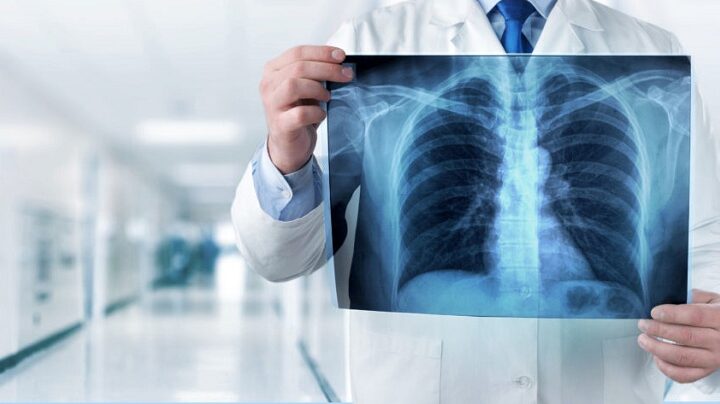The development of hospital imaging devices in the United States acts as a symbol of ongoing attempts at medical imaging innovations in diagnostics. From X-rays to magnetic resonance imaging (MRI) and computed tomography (CT) scans many different conditions can be diagnosed and treated just by a device. In this article, we will be looking at the recent changes in the hospital imaging systems in usa and how they have brought positive changes in the way that patients are cared for, medical processes, and healthcare in general.
Precision and Accuracy
The first thing, that every hospital imaging system in the United States should aim at, is to present the doctors with extremely precise and accurate diagnostic information. Along with the technology, imaging systems improved their capabilities to have an unimaginable level of detail, so health providers can now detect and display the most challenging cases in detail. Whether it’s identifying tumours, evaluating the extent of internal injuries, or appraising organ function, modern systems will have a critical role in providing insights into the medical stuff and resulting in better outcomes for the patients.
Enhanced Imaging Modalities
The newest imaging technology at USA’s hospitals today includes a wide range of modalities adapted to different diagnostic objectives in mind. These modalities may range from just the usual X-rays and ultrasounds to more sophisticated MRI, CT, and positron emission tomography (PET) for the diverse purposes of visualization of anatomy and physiological function. Additionally, advanced clinical tools, molecular imaging, and optical coherence tomography (OCT) are greatly improving medical diagnostic imaging, and they are revealing new horizons for earlier disease detection and more individualized treatment schemes.
Fast Development of Technology and Science
The rate of progress in innovative imaging systems in hospitals is rapid. Digital radiology, 3D imaging, and AI algorithms are innovations that have transformed the field and armed radiologists with speedier, better-quality image acquisition, and automated image interpretation capabilities. Similarly, advanced cloud-based solutions and telemedicine facilities bring about smooth data transfer and remote consultations which in turn allows for the expansion of imaging services and increases workflow efficiency.
Patient-Centred Care
Presently hospital imaging systems in the USA have given an edge to the patient-centred care approach indicating the patient’s experience. Features like quicker scan periods, less radiation exposure, and conducive quieter environments ensure the comfort and satisfaction of the patient. In addition, improvements in issues of safety and accessibility ensure that imaging procedures are available to persons of all ages and physical abilities, hence creating a hospitable and inclusive healthcare environment.
Multidisciplinary Collaboration
The way contemporary medical care is organized based on the combination of different specialists, and the hospital imaging systems are a fundamental point of this collaborative approach. Healthcare professionals including radiologists, oncologists, surgeons, and many others use the image data to cooperate on diagnosis, treatment planning, and post-treatment monitoring. These technologies enable smooth communication and data flow among multi-disciplinary teams, allowing them to provide well-rounded patient care and help medical practice evolve.
Personalized Medicine
The revolution in personalized medicine has brought in a new paradigm in healthcare, and imaging systems in hospitals form an important component of this general change. Through the detailed presentation of both the anatomical and the functional characteristics at the specific level, the imaging technologies let doctors personalize the treatment according to the peculiar features of each patient. From the selection of the most accurate treatment method to monitoring of the therapy reaction in full personalized imaging insights help healthcare providers to implement treatments that are targeted, maximize therapeutic outcomes, and minimize side effects.
Data-driven Insights
In the age of big data, medical diagnostic imaging systems are the rich sources of clinical information that guide evidence-based decisions and quality improvement. Advanced imaging diagnostics use machine learning algorithms that can analyze large amounts of image data, extract meaningful insights, discover patterns, and forecast patient outcomes. When applying data-based analytics, healthcare providers can optimize resource allocation, organize workflows, and enhance diagnostic accuracy. Consequently, the quality-of-care delivery is improved as well as the efficiency of all operations being carried out.
Addressing Healthcare Disparities
While access to hospital imaging systems has come a long way, the gaps still exist, mainly among rural residents and people living in poor communities. Realizing this problem, healthcare institutions and policymakers are devoted to tele imaging and mobile imaging to close the gap and provide expanded service access. Thanks to imaging services being made accessible straight to patients’ homes, these initiatives facilitate remote communities to obtain prompt and equitable health care, which in turn narrows down the gap of healthcare inequality.
Constant Innovation and Exploration
The medical diagnostic imaging system space is defined by permanent innovation as well as the promotion and development of research counterparts aiming at increasing diagnostic capabilities. Ranging from discovering innovative imaging methods to designing new-generation imaging agents and contrast media, the active participants in this field are researchers and industrial stakeholders who are key contributors to the advancement of MRI (magnetic resonance imaging). This, in turn, leads to the creation of collaborative initiatives such as imaging and clinical trial networks which can facilitate knowledge exchange and translation of research findings to clinical practice which in turn advances the advancement of medical imaging diagnostics.
The Future Prospects and Obstacles
In the future, hospital imaging systems are likely to become even more intelligent with the development of more innovative technologies. Nevertheless, the road is bumpy with barriers such as the increasing costs of image technologies, interoperability problems, and regulatory complexities. Resolving these persistent issues goes no saying that stakeholders in various healthcare sectors must take up the responsibility and make efforts towards the sustainable implementation of imaging technologies as well as equitable distribution of resources.
Conclusion:
To sum up, the latest hospital imaging systems revolution in the USA is an incredible display of these three human factors: technology, clinical expertise, and patient care and well-being. Highly advanced information technologies ranging from precision diagnostics to individualized solutions are altering the shape of healthcare by improving patient outcomes and healthcare delivery models. Although we are just beginning to explore the potential of modern medical diagnostic imaging, the future looks promising as it will help us achieve many goals and improve the health of all mankind.




